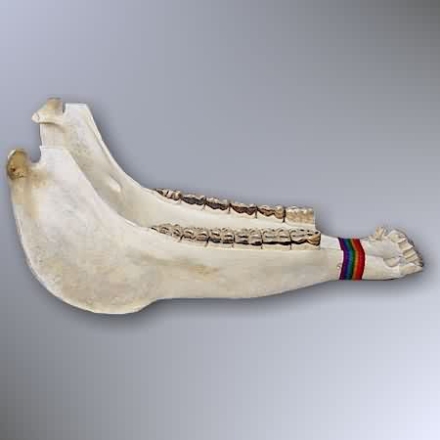Percussionists are often called upon to play unusual instruments. One such instrument is the quijada or the jawbone of an ass (donkey). This instrument is mostly found in South America, Central America and the Caribbean. I own two of them, one of which I bought in the mid-1970s while on tour in Austria of all places. This is probably not an instrument endorsed by PETA since it is literally the jawbone of a large animal left to dry, cleansed of all but bone and teeth. The teeth are removed and reinserted into the socket, held in by wires, thus allowing the teeth to rattle. The method of playing is much like that of a tuning fork as it’s held by the closed end and struck on one side of the open end, generally with one’s fist. This creates a vibration that moves the teeth rapidly, creating a dry rattling sound.
It is used traditionally in various forms of Latin popular music. However, modern composers such as John Cage have included this instrument in some of their works. The most notable work of John Cage that uses a quijada is his Third Construction written in 1941. It is scored for four percussionists, one of which plays the quijada, a conch shell trumpet and several other unusual instruments. Cage referred to this piece as his Bolero since it is very lively and an audience favorite. In the 50s or 60s, a percussion manufacturer, Latin Percussion, designed a vegan version of this instrument made of wood and metal and is often used in modern orchestras and small ensembles.
There are a lot of drummer jokes out there. My offering is, “Who plays the jawbone of an ass?” The answer, “Another one that still has his jawbone.”
Click here [and scroll down] for video.

